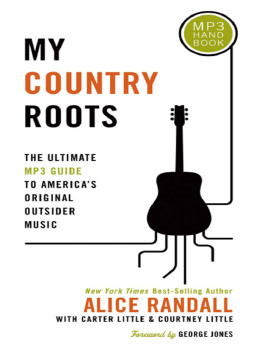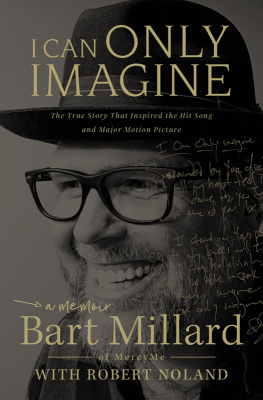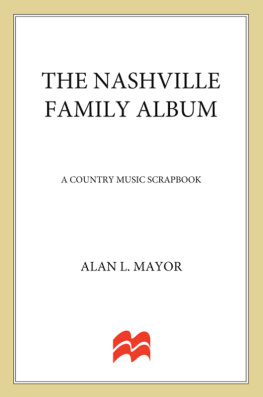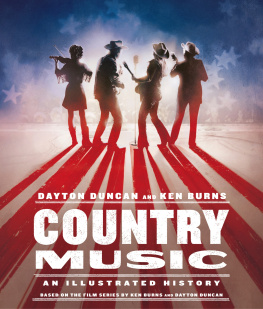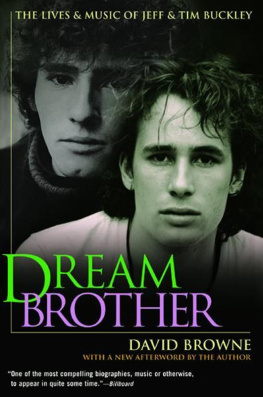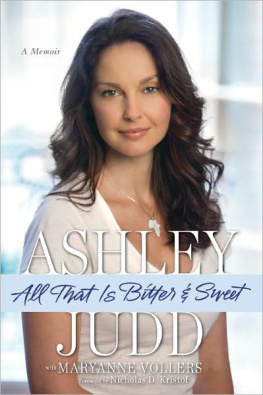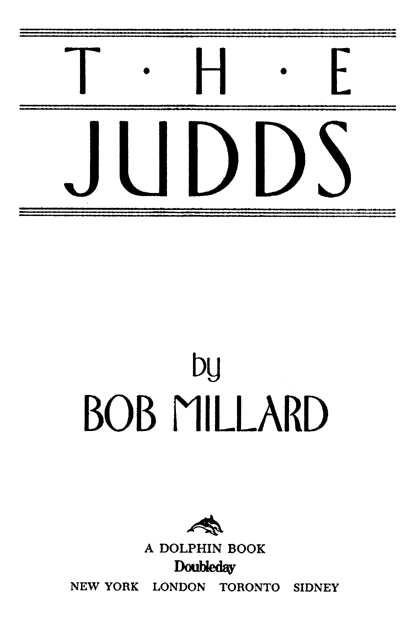Dolphin and the portrayal of two dolphins are trademarks of Doubleday, a division of Bantam Doubleday Dell Publishing Group, Inc.
Library of Congress Cataloging-in-Publication Data
Millard, Bob, 1951
The Judds: a biography / by Bob Millard.
p. cm.
A Dolphin book.
1. Judds (Musical group) 2. Country musiciansUnited States
Biography. I. Title.
ML421.J82M5 1988
784.5200922dc19
[B] 87-37952
MN
eISBN: 978-0-307-78101-7
Copyright 1988 by Bob Millard
All Rights Reserved
v3.1
Acknowledgments
I am indebted to many people for their help and contributions to this book. Among the community of writers whose livelihood derives, at least in part, from covering entertainers and the entertainment industry, there are some real pros who coincidentally happen to be very generous human beings. That they shared their own primary source materials, contacts, rumors, gossip, tips, deliciously (and often appropriately) cynical senses of humor, plus their professional time and talents was a great source of encouragement and satisfaction for me. They are good friends, old and new, from the fraternity of persons whose job it is to suffer the egos and sift through the hype of the entertainment industry in order to produce objective and accurate stories on deadline.
The following writers have my most sincere and heartfelt thanks for their substantial contributions of material, time, and ideas: Bob Allen, Ellie Brecker, Patrick Carr, Diane Comer, Ed Morris, Alanna Nash, and Robert K. Oermann. They gave me their best. Any errors found within these pages are my own.
Some material in this book originally appeared in, and is reprinted by permission of, Country Music magazine, Country Song Roundup, Music City News, and the Gavin Report. From each of these publications, respectively, I especially wish to thank Russell Barnard, Rick Bolsom, Neil Pond, and Lisa Smith for their cooperation. Thanks are also due to the Country Music Foundation Library and its staff, as well as to Ellen Wood, Melodye Busbin, and Betsy Bateman of BMI and Tom Long of ASCAP, for their help in researching and making contact with their affiliated songwriters.
I especially wish to thank all the sources quoted in these pages from my own interviews. Their perspectives and insights contributed to making this biography a more interesting and substantial story than it might otherwise have been. Some I quoted, and others I did not. All are sincerely appreciated. Their recollections filled in a lot of gaps in my research and provided unique first-hand accounts of the lives and career development of two unique persons: Naomi and Wynonna Judd.
There are so many others who helped me with information, anecdotes, or just encouragement, and I thank them all. For providing his country home as the perfect retreat for late-inning writing, I am much obliged to Ashley Wiltshire. For constant patience and encouragement, my wife Lucinda Smith has all my love and deepest appreciation. I also wish to thank Madeleine Morel of 2M Communications and Casey Fuetsch of Doubleday/Dolphin Books for their continued efforts and faith in me. It also behooves me to thank Naomi and Wynonna Judd for having, as it turned out, lives that were even more interesting than their publicity.
BOB MILLARD
Contents

ONE

Growing Up in Ashland, Kentucky

The delivery room of Kings Daughters Hospital was only a couple of blocks from the house in downtown Ashland, Kentucky, where Charles Glen Judd and Pauline Ruth Oliver Judd lived. Glen and Polly got a several months head start on the official post-World War II baby boom when daughter Diana Ellen Judd was born there January 11, 1946. The babys middle name came from her grandmother Ellen Judd. Years later, when she discarded Diana for the more colorful appellation Naomi, she would keep her middle name for sentimental reasons.
Ashland in 1946 was a bustling river town with ten thousand people. Split between Boyd and Greenup counties in the westernmost part of the Appalachian Mountains, Ashland is high up in the northeastern part of Kentucky. It sits close to the ground on the banks of the Ohio River just across from Coal Grove, Ohio, a ragged rural community edging out from the barge ports for cement, sand, and coal tipples that line that side of the riverbank. A few miles south is the border with West Virginia. Young people on both sides of the Ohio River cross over the bridge that runs into Winchester Street, to flash fake IDs and buy booze in each others states. Young Ohio and West Virginia couples in a hurry know well the speed with which they can accomplish an elopement in Catlettsburg, outside of Ashland.
The Ashland Oil Company was headquartered in the town when Diana was growing up. It owned and operated producing wells, crude oil pipelines, a fleet of river barges for hauling both crude and refined products, and the tall cat crackers that distilled gasoline and naphtha out of crude oil. You couldnt miss the refinery smellthe smell of progress some saidwhen the winds were right. Its retail products included Valvoline motor oils and Ashland motor fuels, sold through a regional chain of service stations. Ashland Oil was one of the top employers in the city and one of the most important industrial names on the civic map. By the early 1950s, in the center of the town which gave its name to one of its largest industries, you could find Glen Judds Ashland Stationthe biggest in the city, the pride of its operator and the bread and butter of his growing family.
Glen Judds business thrived, for if ever there was a golden age of the automobile in America, it was the 1950s. Auto manufacturers had learned how to crank out tanks, jeeps, and troop-carrying trucks at high speed during the recent war. They perfected the basic process once their Detroit assembly lines were released back to peacetime production. De Sotos, Packards, Hudsons, Lincolns, Fords, and Chevrolets were rolling off the car lots and onto the roads, where they would need gasoline, lubricants, and eventually, service work. It was a boom time all over the nation, a good time to be alive and an especially good time to be anywhere in the automobile sales or service business. Glen and Pollys family grew right along with the service station. Soon Diana Ellen had as siblings Brian, Margaret, and Mark.
Far from having had a childhood of rural poverty, Diana Ellen Judd grew up in a comfortable middle-class home, which her family bought outright from her grandparents when she was about four years old. Located on the twenty-two-hundred block of Montgomery Avenue, the house is in a neighborhood of substantial residential buildings, large town homes on small lots, many in the immediate area having the renovated elegance of a historic district. A couple of blocks away were the Paramount and Capital theaters, where Diana and friends from Crabbe Elementary School walked to watch movies on Saturday afternoons. Nearby are the well-kept playgrounds, ball fields, and expansive green space offered by Ashlands Central Park.





